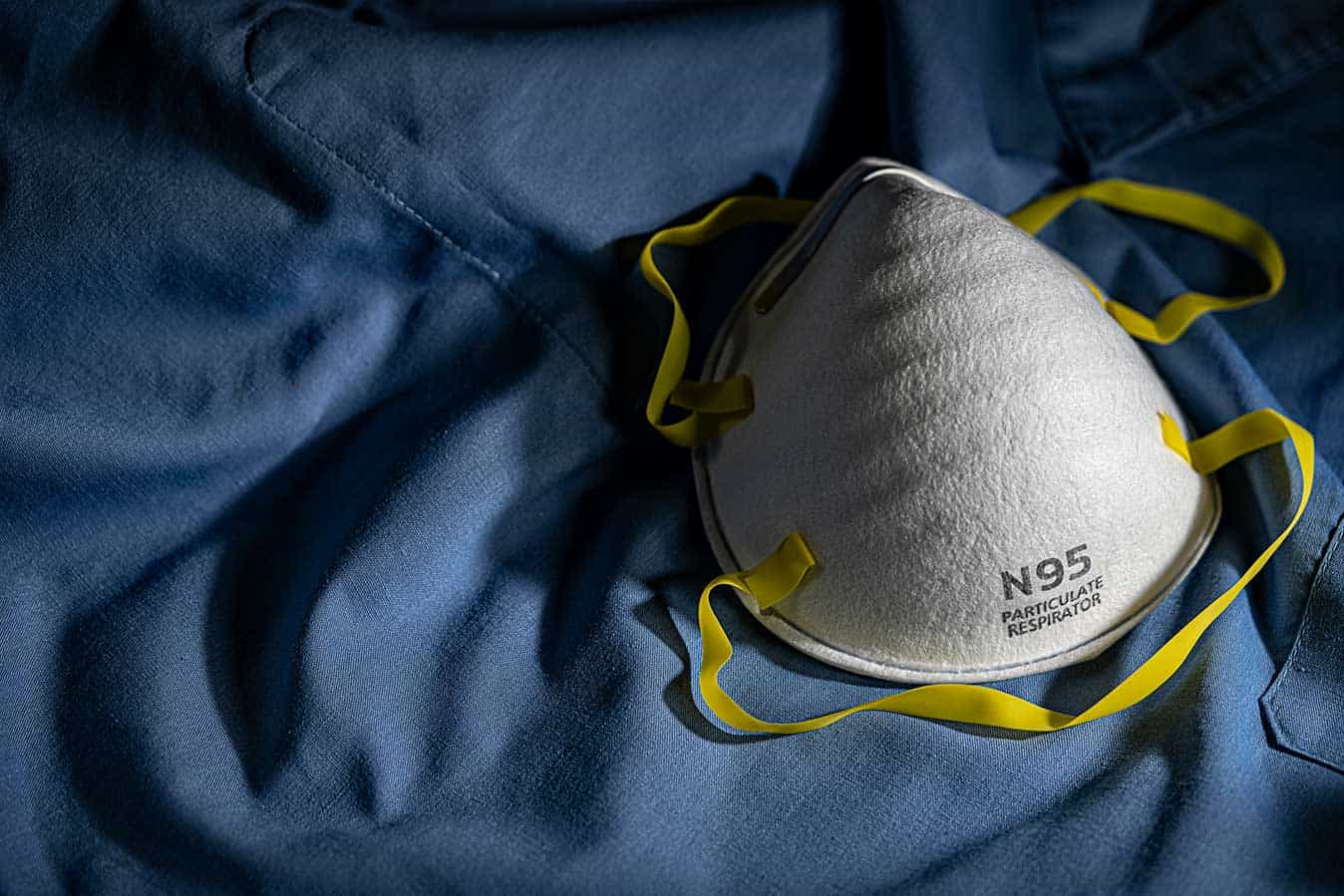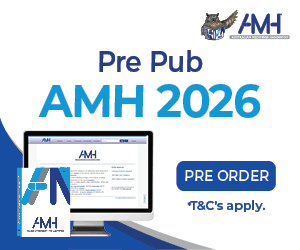Fit testing and checking PPE is evidence-based best practice for protecting the health and safety of staff, patients, and the wider community in the context of caring for people with suspected or confirmed COVID-19.
Key points
- Fit testing and checking are both essential components of respiratory protection programs.
- Fit testing enables staff to select the size and type of respirator that fits them properly. It should occur every time a new type, brand, or size of respirator is used.
- Fit checking enables staff to identify whether or not their respirator has achieved an effective seal. It should occur every time a respirator is put on.
- Respirators that do not fit properly put staff, patients, and the wider community at risk of COVID-19 related sickness and death.
- Workplaces are responsible for protecting their staff from COVID-19 by ensuring that both fit testing and checking occur.
- Fit testing and checking PPE is evidence-based best practice for protecting the health and safety of staff, patients, and the wider community in the context of caring for people with suspected or confirmed COVID-19.
Introduction
While Australia is faring extremely well regarding the global COVID-19 pandemic, frontline health care staff are still facing serious risks to their health and well-being when they provide care or work with people with suspected or confirmed COVID-19 infection. We have learned from experience from early on in the pandemic that without adequate protection including best practice use of personal protective equipment (PPE), health care staff can become infected, sick, and die due to exposure to the SARS-CoV-2 virus while in the line of duty. This isn’t only a risk to individual staff but also to their patients, colleagues, families, and the wider community. Indeed, there are numerous incidents where staff have accidentally transmitted COVID-19 from their workplaces to community settings – likely as a result of inadequate infection protection and control practices at work.
To be safe and effective, people who work with patients or community members with suspected or confirmed COVID-19 must correctly use the right type and right size of PPE.[1][2] This means that workplaces must be able to provide their staff with suitable PPE supplies and guidance. If staff use the wrong type or size of PPE, then they, their patients, and others are at risk.
In the same way that there are different types and sizes of clothes, PPE also comes in a variety of types and sizes. It is common sense that not every type or size of PPE will fit every person. People are different sizes and shapes and this matters importantly for when they are selecting and putting on PPE at work.
In Australia, the Commonwealth Department of Health, National Medical Research Council, and the Australian Commission of Healthcare Safety and Quality recommend that both fit testing and fit checking are required for both P2 and N95 respirators.[3] This is also supported by State-based bodies including the New South Wales Government and Clinical Excellence Commission in the context of COVID-19.[4]
What types of PPE are there?
In the context of COVID-19 PPE includes:
- Single-use surgical masks
- Single-use, powder-free, non-sterile gloves
- Single-use fluid-resistant, long-sleeved, cuffed isolation gowns[1]
- Single-use or reusable eye protection (goggles or glasses with side shields, plastic visors/face shields)
- Single-use, fit-checked respirators (P2 or N95 minimum) [2]
Many of the items above come in different sizes (e.g. gloves, gowns, and respirators). Also, there are many different brands/manufacturers of each type of PPE and just like clothing, different brands are differently sized and fit differently. Because one of the main routes of infection for the SARS-CoV-2 virus is via the nose and mouth, P2 and N95 respirators are one of the most important PPE items. To work properly, these respirators must create a strong seal on a person’s face.
What is fit testing?
Put simply, fit testing is a formal process for enabling staff to correctly identify and use the type and size of respirator/s that create an effective seal on their face.
Respirator fit testing is a formal component of an overall respiratory protection program and provides health and aged care workers with guidance for choosing the brand, model, and size of respirator which provides the best fit for each individual employee, as well as instructions for proper use.[5][6] Fit testing can be conducted using quantitative and qualitative approaches and should be conducted by a trained operator. Fit testing should occur each time a new brand, model, or size of respirator is used by an individual to ensure adequate fit.[7][8] Fit testing allows staff to identify what respirators they can use to get a proper fit.
Because fit testing is a formal process, to keep staff safe, it is the responsibility of employers to ensure that it takes place.
What is fit checking?
Staff must fit check their respirator every time they put one on. This is because even the right size and type of respiratory for an individual doesn’t automatically guarantee a good seal as soon as it is put on. Just like sizes and shapes of the same clothing item from the same brand can be slightly different, each respirator may be subtly different or need careful adjustment to fit properly.
Respirator fit checking is component of respiratory protection programs and involves the staff member checking to ensure that a proper seal has been achieved on the face each time a respirator has been put on.5 This includes correcting positioning the respirator and straps, forming the nose bridge/clip of the respirator, and ensuring that facial hair is not present to interfere with the seal. Training in fit checking has been found to result in staff achieving a better seal when they use respirators and should be performed each time a respirator is put on.[9]
Both fit testing and checking are important
After over a year of the pandemic unfolding in Australia and a relatively low number of suspected or confirmed cases, there is no excuse as to why fit testing and checking is not standard practice in all workplaces where PPE is used.
An incorrectly sized or fitted respirator does not provide a safe, effective seal on the person’s face.[10],[11] If the size and fit is wrong, virus particles can enter around the sides of the respirator which may then contaminate the inner surface of the mask or face or be inhaled. While training in the proper use of respirators is vital, fit testing may be associated with additional time and costs.[12] These costs, however, would be minor in comparison to the costs to health and safety posed by inadequate respiratory protection. Some have argued that fit tests for respirators should not be conducted due to associated additional time and cost, arguing that the user fit check adequately ensures an effective face seal. More recent evidence however suggests that lack of fit testing results in apparent reductions in the number staff able to achieve an effective seal.[13] Fit testing as part of a respiratory protection program is often effective in ensuring that almost all workers are able to identify a suitably fitting mask from the existing available range of respirators.[14]
If fit testing or checking reveals that a person cannot get an effective seal, then they should not be made to work in a setting that puts them at risk of infection. This is because a poorly fitting respirator is no more effective than a surgical mask.
By ensuring that fit testing and checking are both formal parts of a workplace’s respiratory protection program, frontline workers, patients, and the community are kept safer from the risks of COVID-19-related infection, illness, and death.
To access the ANMF’s evidence-based resources on COVID-19 including for PPE, fit testing and checking, and vaccines, please follow the link below:
COVID-19 Information for ANMF Members
References
[1] Plastic aprons may be worn with a non-fluid resistant gown if suitable fluid-resistant gowns are unavailable.
[2] A single respirator may be used for up to four hours without being removed while caring for multiple patients with the same diagnosis.
Peters MDJ, Marnie C, Butler A. Policies and procedures for personal protective equipment: Does inconsistency increase risk of contamination and infection? International Journal of Nursing Studies. 2020;109:103653.
- United Kingdom Health and Safety Executive. Fit testing face masks to avoid transmission: coronavirus (COVID-19). 2020. https://www.hse.gov.uk/news/face-mask-ppe-rpe-coronavirus.htm#
- Australian Commission on Safety and Quality in Healthcare. Australian Guidelines for the Prevention and Control of Infection in Healthcare: 2019. May 2019 2019. https://www.nhmrc.gov.au/about-us/publications/australianguidelines-prevention-and-control-infection-healthcare-2019#block-views-block-file-attachments-contentblock-1.
- New South Wales Government and the NSW Clinical Excellence Commission. Application of PPE in Response to COVID-19 Pandemic. 27 April 2020 2020.http://www.cec.health.nsw.gov.au/keep-patients-safe/COVID-19.
- Hines L, Rees E, Pavelchak N. Respiratory protection policies and practices among the health care workforce exposed to influenza in New York State: evaluating emergency preparedness for the next pandemic. American Journal of Infection Control. 2014; 42(3):240-5.
- Clayton M, Vaughan N. Fit for purpose? The role of fit testing in respiratory protection. The Annals of Occupational Hygiene. 2005; 49(7):545-8.
- Ciotti C, Pellissier G, Rabaud C, Lucet JC, Abiteboul D, Bouvet E. Effectiveness of respirator masks for healthcare workers, in France. Medecine et Maladies Infectieuses 2012; 42(6):264-9.
- Winter S, Thomas JH, Stephens DP, Davis JS. Particulate face masks for protection against airborne pathogens – one size does not fit all: an observational study. Critical care and resuscitation: journal of the Australasian Academy of Critical Care Medicine 2010; 12(1):24-7.
- Or P, Chung J, Wong T. Does training in performing a fit check enhance N95 respirator efficacy? Workplace Health & Safety. 2012; 60(12):511-5.
- Myong JP, Byun J, Cho Y, et al. The education and practice program for medical students with quantitative and qualitative fit test for respiratory protective equipment. Industrial Health. 2016; 54(2):177-82.
- Viscusi DJ, Bergman MS, Zhuang Z, Shaffer RE. Evaluation of the benefit of the user seal check on N95 filtering facepiece respirator fit. Journal of Occupational and Environmental Hygiene. 2012;9(6):408-16.
- Hannum D, Cycan K, Jones L, et al. The effect of respirator training on the ability of healthcare workers to pass a qualitative fit test. Infect Control Hosp Epidemiol. 1996; 17(10):636-40.
- Danyluk Q, Hon CY, Neudorf M, et al. Health care workers and respiratory protection: is the user seal check a surrogate for respirator fit-testing? Journal of Occupational and Environmental Hygiene. 2011; 8(5):267-70.
- Shaffer RE, Janssen LL. Selecting models for a respiratory protection program: what can we learn from the scientific literature? American Journal of Infection Control. 2015;43(2):127-32.
Authors
Micah D J Peters PhD and Mr Casey Marnie are in the National Policy Research Unit, Australian Nursing & Midwifery Federation (Federal Office).
Both are based at the University of South Australia, Clinical and Health Sciences, Rosemary Bryant AO Research Centre.








